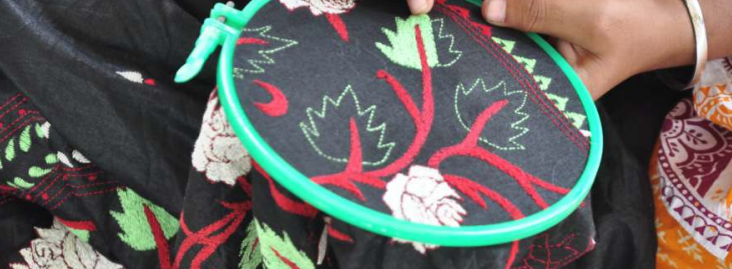
Embroidery, Recycled, Upcycled Crafts, Textiles, Weaving, Spinning, Khadi
Kantha Embroidery of West Bengal
Kantha embroidery was done by village women on soft, discarded dhotis and saris. Practitioners of this craft are found in West Bengal. Layers of old white dhotis or white or faded saris were held together and stitched with running stitches along the edges using thread drawn out of the faded borders of the saris. The borders were torn and kept aside especially for this purpose. If the kantha was a quilt then five to six layers of soft fine cloth were used. For other purposes three or four layers were used. The top and bottom layers of a kantha are always white or of a very light colour so that the embroidery is visible. The muted colours gave the kantha a soft pastel effect. Those used as quilts are called lepkanthas and those made as counterpanes are called as sujuni kanthas. Kanthas are also made as covers for boxes and mirrors, as pillow cases, stoles for women, and shawls for men.
The stitches are patterned running stitches which cover the entire surface of the piece. The layers are held by the stitches and the surface gets a delicate, rippled look. The designs are never repeated. Traditionally kanthas were never meant for sale — they were either gifts or else made for personal use. Kantha patterns include geometrical or floral motifs and themes drawn from the living world with a central design which is usually floral. Traditional designs are copied to make kanthas in the form of saris, stoles, table linen, and furnishing fabrics. New cotton and silk are used for these and except for saris, the items are layered. Now kantha saris and dupattas have become fashion items with the fabrics used ranging from silks to cotton.
Gallery
YOUR VIEWS
PRACTITIONERS: INDIA
Access 70,000+ practitioners in 2500+ crafts across India.
BIBLIOGRAPHY
10,000+ listings on arts, crafts, design, heritage, culture etc.
GLOSSARY
Rich and often unfamiliar vocabulary of crafts and textiles.
SHOP at India InCH
Needs to be written.





